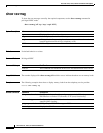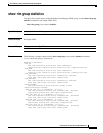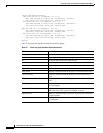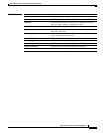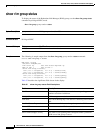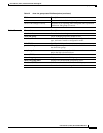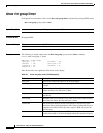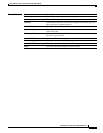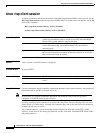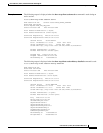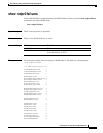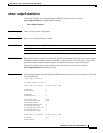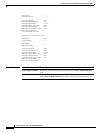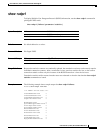
Cisco IOS Voice, Video, and Fax Commands: R Through Sh
show rtsp client session
VR-774
Cisco IOS Voice, Video, Fax Command Reference
show rtsp client session
To display cumulative information about Real Time Streaming Protocol (RTSP) session records, use the
show rtsp client session command in privileged EXEC mode. To set the value to the default, use the no
form of this command.
show rtsp client session {history | active} [detailed]
no show rtsp client session {history | active} [detailed]
Syntax Description
Defaults Active (current) stream information is displayed.
Command Modes Privileged EXEC
Command History
Usage Guidelines Use this command to display cumulative information about the session, packet statistics, and general call
information such as call ID, session ID, and so on.
Note Session refers to a session between the application and the RTSP client. Each call leg that is
configured to use RTSP streaming has a session.
A call leg could play several prompts in a session; the “Play Time” refers to the play time associated
with a stream or, in other words, a prompt; the cumulative play time is the sum total of all streams (or
prompts) played out in a session.
The command output is a stream block that contains information about the stream (URL, packet
statistics, current state of the stream, play duration, call ID, session ID, individual RTSP stream URLs,
and packet statistics).
history Displays cumulative information about the session, packet statistics, and
general call information such as call ID, session ID, individual RTSP
stream URLs, packet statistics, and play duration.
active If the keyword detailed is not specified, the command displays the
session information and stream information for the stream that is
currently active.
detailed (Optional) If the keyword detailed is specified, the command displays
the session information and stream information in detail for all streams
that are associated with the session.
Release Modification
12.1(3)T This command was introduced on the Cisco AS5300 universal access
server.



